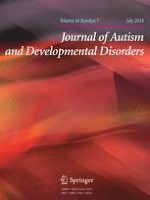01-07-2014 | Original Paper
Narrative Performance of Optimal Outcome Children and Adolescents with a History of an Autism Spectrum Disorder (ASD)
Gepubliceerd in: Journal of Autism and Developmental Disorders | Uitgave 7/2014
Log in om toegang te krijgenAbstract
Autism Spectrum Disorders (ASDs) have traditionally been considered a lifelong condition; however, a subset of people makes such significant improvements that they no longer meet diagnostic criteria for an ASD. The current study examines whether these “optimal outcome” (OO) children and adolescents continue to have subtle pragmatic language deficits. The narratives of 15 OO individuals, 15 high-functioning individuals with an ASD (HFA), and 15 typically developing (TD) peers were evaluated. Despite average cognitive functioning, the ASD group produced narratives with fewer central “gist” descriptions, more ambiguous pronominal referents, idiosyncratic language, speech dysfluency (more repetitions and self-corrections), and were less likely to name story characters. The OO participants displayed only very subtle pragmatic and higher-level language deficits (idiosyncratic language and self-correction dysfluency).
